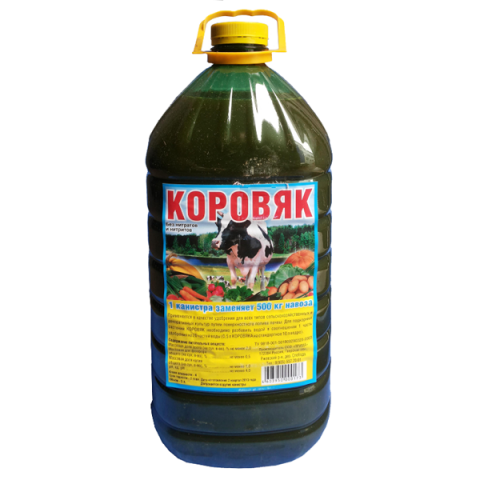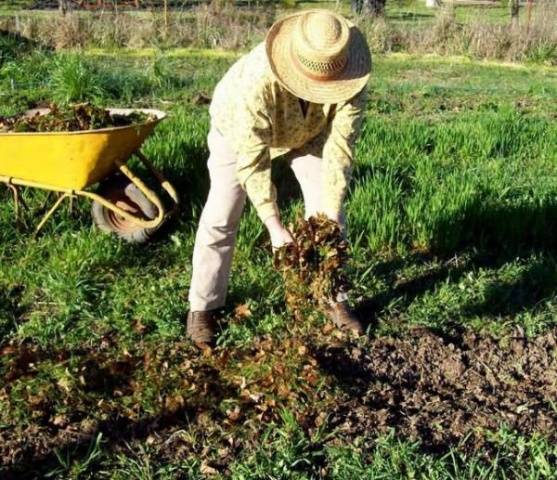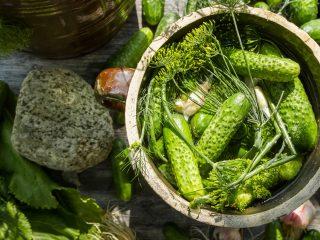Content
Every gardener dreams of a rich harvest. It pleases not only fresh, but also as a preparation for the winter. If you want to grow a lot of good, big and healthy cucumbers, then it is important to think about feeding them. Everyone knows that it is impossible to achieve the best results without fertilizer. Therefore, a logical question arises: what is needed feed the cucumbersso that they bear good fruit? Many people often resort to using store-bought minerals. They are quite easy to work with, however, these substances remain “chemicals”. If you are one of those who thinks and cares about a good harvest, then it is better to resort to organic fertilizers. With them, your cucumbers will be environmentally friendly and safe.
One of the options for ecological fertilizer for cucumbers is mullein. Let's take a closer look at this type of fertilizer and find out exactly how to feed cucumbers with mullein.
Mullein - concept and composition
Some people don't know what mullein is. This is a very effective fertilizer of natural origin. They feed plants in the garden and garden to increase productivity. To put it bluntly, this is cow dung. It not only increases the productivity of plants in the garden, but also strengthens their immunity and protects them from diseases.
What does it contain? You can name all the useful substances that a plant needs for development, growth and fertility. Here is a list of these substances:
- sulfur;
- potassium;
- nitrogen;
- magnesium;
- phosphorus;
- calcium.
You may be surprised, but if you add one ton of manure to the soil, it will enrich it with nitrogen by 5 kg, phosphorus by 2.5 kg and potassium by 6 kg. This has a very positive effect on both the growth of your plants and their ability to bear fruit.
The most important thing is that the nitrogen in mullein is in an organic state. During decomposition, 1/3 of the nitrogen is released very quickly, but the rest of the substance is very stable and has a positive effect on the plant. The same applies to phosphorus. And if we talk about potassium, it is 100% soluble in water and is absorbed by the plant immediately after adding it to the soil. Why is mullein so useful for cucumbers and other plants?
Mullein for cucumbers - beneficial properties
This type of fertilizer has a lot of useful substances. If you use mullein as a fertilizer for your cucumbers, then the first positive point is the intensive reproduction of beneficial microorganisms in the soil. The thing is that this organic matter contains a source of energy and food for all microorganisms. The second point is that thanks to cow manure, the physical and physico-chemical characteristics of the soil are significantly improved. This allows you to make insoluble compounds in the soil easily digestible.
In addition to everything, we would like to note the property of the fertilizer to help create soil in the form of small lumps. It is this soil structure that is considered ideal for growing all kinds of plants.Why? Such lumps of soil are saturated with humus, and when you water the soil or it rains, it is difficult to wash them away with water; they become durable. If you add mullein to difficult soil that has a lot of clay, the mullein will make the soil loose. After adding fertilizer, it will be easier to process, and it will warm up better and faster. This has a positive effect on both the development of cucumbers and its yield.
However, before we start feeding cucumbers with mullein, let's look at the types of this fertilizer and how to prepare it. Thanks to this, you will not have problems with the feeding process itself.
Varieties of mullein
It is logical that to produce mullein you need to have a cow. It is she who is the source of this useful fertilizer for cucumbers and other plants. There are two varieties of mullein, depending on how you house the cow. Some people make straw or sawdust bedding in the barn, others do not. In this regard, mullein can be:
- Litter type.
- Liquid type.
In the first case, you will get solid manure with straw included. If you store it, then over time it begins to rot and turns into humus. If we talk about the liquid form of mullein, then it is used to create humus in a compost pit. There it is mixed with soil, weeds, sawdust, straw, fallen leaves and vegetable tops. In this case, the ratio of auxiliary components and manure is reduced to 2/5 (2 parts components, 5 parts mullein).Lime or wood ash can be added to this useful compost in a ratio of 2-4% of the total compost volume.
The cooking process is as follows:
- In a hole (or plastic barrel), straw, leaves and sawdust are poured at the bottom.
- The contents are filled with liquid manure.
- The third layer is the same straw, leaves and sawdust.
- Then a layer of mullein to cover the previous layer. The process continues until the contents reach the edges of your pit (plastic container).
Mullein can be used either fresh or half-rotten or decayed. It’s just important to consider that fresh fertilizer damages the roots and stems of some crops. The process causes a burn, after which the root dies. Therefore, the use of fresh mullein is limited to adding it to the soil in the autumn for digging up the soil. Then, before the beginning of spring, the fertilizer will burn out or rot, and will not damage the roots of cucumbers or other crops. But in summer and spring, mullein is used when it is rotten or half-rotten. But the question arises: how do you feed cucumbers with mullein? What should you consider to create ideal conditions for cucumbers?
Features of feeding cucumbers with mullein
We have already found out the importance of feeding. With it, you will significantly increase the yield, strengthen the plant and make the fruits ideal. The process of applying fertilizer is simple. It is only important to take into account some points regarding the application of fertilizer, as well as the method of preparing manure.
Cucumbers need to be fertilized several times throughout the season. On average, this is once every 10–12 days. This will be enough for the cucumbers to feel comfortable and bear fruit.It is especially effective to use this fertilizer when the cucumber is not very attractive and weak: characterized by thin stems and withering leaves. The recommended period for feeding with mullein is after the cucumbers have sprouted and their leaves have appeared. The first time fertilizing should be done no earlier than 14 days after germination.
It is important to note that the mullein must be prepared in advance. You can use the method indicated above, or you can use another. The second method requires a week of time. The preparation is quite simple: you just need to dilute the mullein with water in a ratio of 1:2. It remains to wait 7 days, during which the fertilizer will infuse and be ready for use. As for applying fertilizer, the solution is added only during watering. The concentrated solution you made may damage the cucumbers. Therefore, dilute half a liter of compost with 1 bucket of water. This way, you will make it safe for watering cucumbers.
Planting begins in May, so in the autumn after harvesting the previous harvest, you need to add fresh mullein and dig up the ground. Until May, the soil will be ideal for planting cucumbers.
There is one caveat regarding watering cucumbers with fertilizer. This should not be done from above the plant. The thing is that cucumbers do not like excess moisture. Ideally, carefully add the mixture to the furrows and grooves where the crop is planted. This way, the fertilizer will go directly to the root and nourish the soil. If we talk about quantity, then per 1 m2 you will need one 10 liter bucket of non-concentrated mullein.When you do everything right, cucumbers will very quickly delight you with a rich, healthy and tasty harvest.
It is worth noting that you should not limit yourself to just one fertilizer. You can alternate healthy organic fertilizer based on mullein and mineral fertilizer. We also love variety in our diet. The same goes for cucumbers. In this way, they will receive absolutely all the beneficial substances that promote rapid growth and excellent fruiting. After all, during the growth stage, cucumbers need nitrogen, phosphorus and calcium, and during the period when the first fruits appear, magnesium, potassium and nitrogen are important. What else can you feed cucumbers with?
- Ash.
- Urea.
- Yeast.
- Bird droppings.
It is not recommended to use all fertilizers at once, but you can choose 1-2 and alternate them. Don't overdo it, but don't forget to apply it on time.
Let's sum it up
From this article you learned the beneficial properties of mullein. This is an excellent organic fertilizer that combines a lot of useful substances for your crops. With it you can achieve a rich harvest that can be obtained in a short time. Cucumbers are tasty, aromatic, healthy and suitable for both fresh consumption and canning. And thanks to the tips and instructions, you can independently fertilize the cucumbers in your area.


















